The Astrological Spread
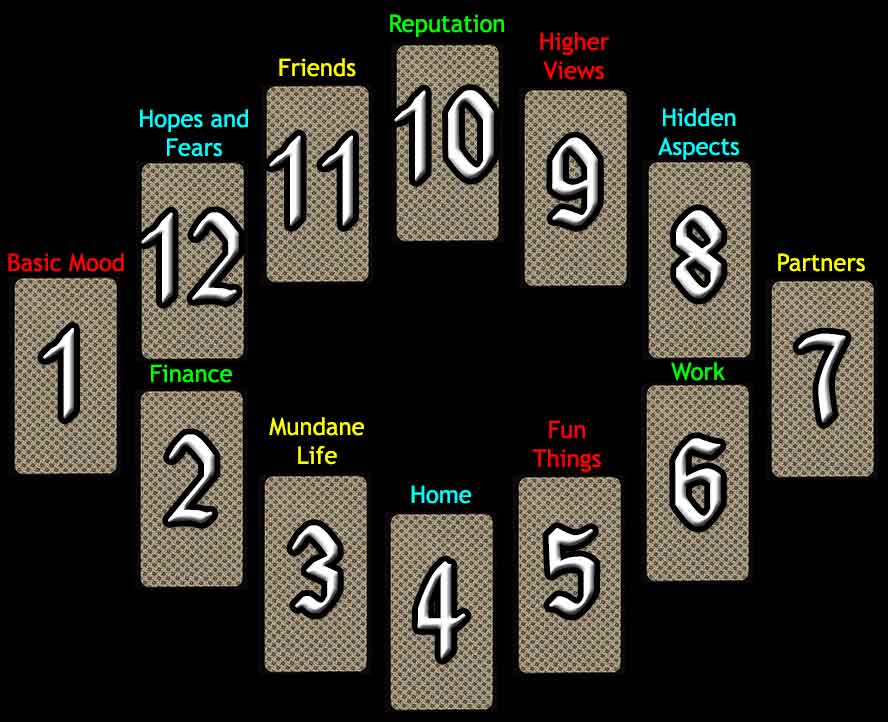
Difficulty: Complicated
The Astrological Tarot Spread is based upon houses of astrology. This complicated spread takes several steps to understand.
The first step is to interpret the tarot card for each individual position in the spread.
The second step involves further examination of the main axes. Positions 1 & 7 show the relationship theme, #1 representing the reader, #7 their partner. Positions 4 & 10 indicate motion. #4 indicates where the reader is now, and #10 suggests what they are moving towards.
The third step involves breaking down the chart into triads according to their house elements.
Positions 1, 5, & 9 represent the Fire triad, symbolising temperament and personal development.
Positions 2, 6, & 10 represent the Earth triad, concerned with materialism, money, and work.
Positions 3, 7, & 11 represent the Air triad, which has to do with thoughts, ideas, and connections with other people.
Positions 4, 8, & 12 represent the Water triad, the realm of emotions, moods, intuition, and yearnings.
Further, other patterns and correlations between certain numbers can be noted. Certain numbers such as the set of 5, 7, & 8 often speak about a particular theme.
Your Astrological Reading
| 10 | ||||||
| 11 | 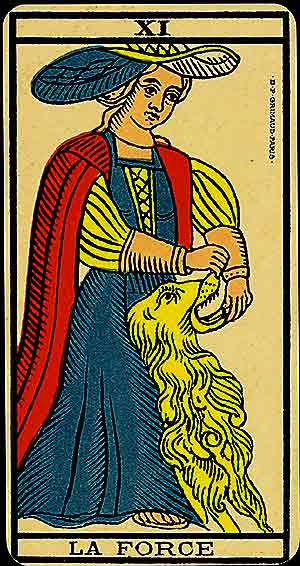 |
9 | ||||
| 12 | 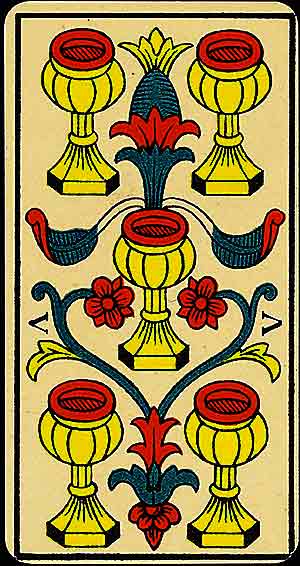 |
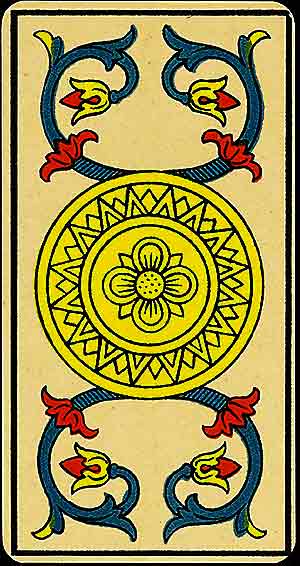 |
8 | |||
| 1 |  |
 |
7 | |||
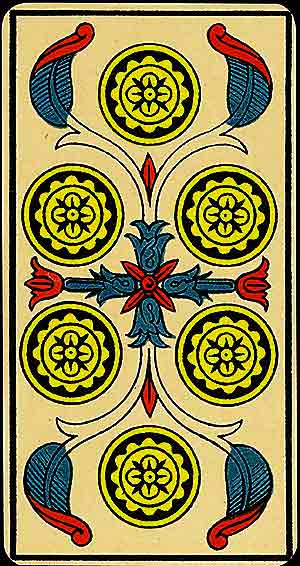 |
2 | 6 | 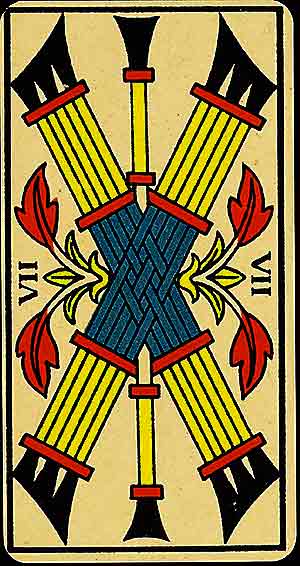 |
|||
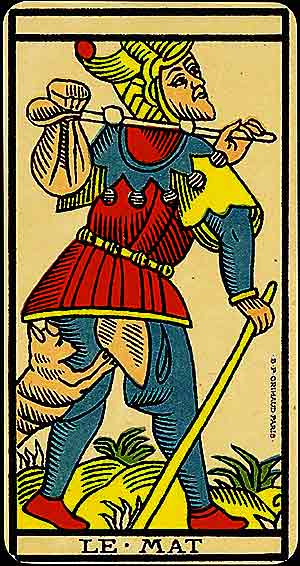 |
3 | 5 | 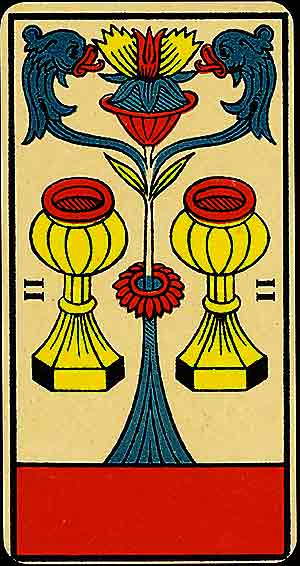 |
|||
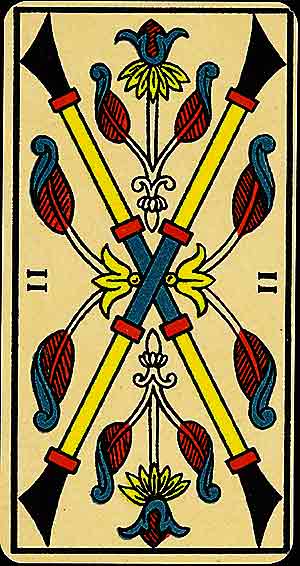 |
4 | 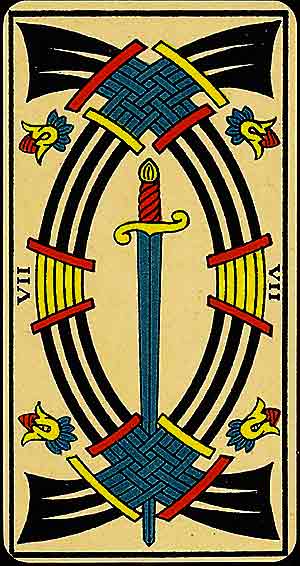 |
||||
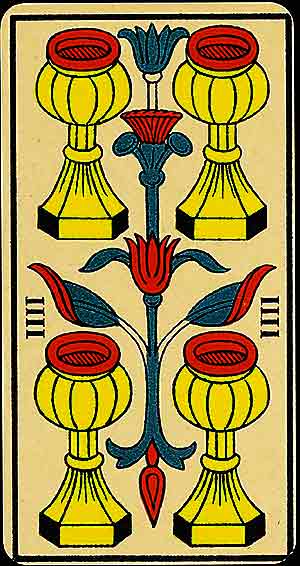 |
1: Basic Mood

The Six of Coins represents generosity, balance, and the cycle of giving and receiving. It signifies harmony in material matters and the importance of equitable exchange.
Symbolism: Six coins are arranged in a pair of triangles, accompanied by floral motifs that reflect abundance and fairness. The design conveys balance and the flow of resources.
In Relationships: Mutual generosity and support strengthen relationships. It emphasises fairness and balance in emotional give-and-take.
In Work: A time of financial balance or assistance, where efforts are rewarded, or you are in a position to help others.
Spiritually: The card reflects the value of sharing knowledge or resources, reminding the seeker of the abundance that flows from generosity.
When ill-dignified: Inequity, selfishness, or imbalance in giving and receiving. It warns against exploiting generosity or neglecting fairness.
2: Finance

The Fool represents the untamed spirit and unshackled freedom of the soul. He wanders without boundaries, embodying movement, exploration, and detachment from worldly concerns. This card invites us to embrace change and unpredictability with courage and spontaneity.
Symbolism: The dog biting at the Fool's leg symbolises the tension between freedom and earthly constraints. His staff and bundle represent the burdens and wisdom accumulated on life's journey, carried with both carelessness and purpose. The colourful jester's attire signifies his eccentricity and adaptability, while his forward gaze reflects an openness to the unknown.
In Relationships: A new, unpredictable connection or the need for more spontaneity in existing relationships. Beware of recklessness.
In Work: Embarking on a risky or unconventional path, where intuition takes precedence over plans.
Spiritually: The Fool embodies the soul's leap into the vast unknown, trusting the divine order of chaos.
When ill-dignified: Naivety, poor judgement, or a lack of grounding. It warns of becoming aimless or distracted by superficial pursuits.
3: Mundane Life

The Deuce of Batons represents planning and the initial stages of action. It symbolises the tension between potential paths and the courage required to step forward.
Symbolism: Two batons intersect, adorned with foliage that hints at growth and duality. The symmetry of the design reflects stability but also implies the need for decision-making.
In Relationships: A partnership at a crossroads, where mutual goals must be clarified.
In Work: Strategic planning and weighing options for growth. It's a call to act decisively.
Spiritually: The card signifies a moment of reflection, urging you to align choices with your higher purpose.
When ill-dignified: Indecision, hesitation, or lack of direction. It warns against delaying action because of fear of failure.
4: Home

The Four of Cups signifies a moment of refined contemplation, a pause to appreciate the richness present while considering what more could enhance emotional fulfillment. It suggests a life abundant in comforts yet calling for deeper engagement to rediscover true pleasure.
Symbolism: Four cups form a balanced and harmonious structure, symbolising emotional stability and refined satisfaction. Their symmetry suggests a state of ease but also the potential for indulgence to lead to complacency. The imagery encourages a conscious appreciation of luxury and the pursuit of deeper emotional refinement.
In Relationships: A period of emotional contentment that may lead to a desire for something more profound. This is a time to rekindle passion, indulge in shared pleasures, and cultivate the richness of connection.
In Work: A phase of stability and success where motivation must now be fueled by inspiration rather than necessity. Seek new heights of creative fulfilment and elevate your ambitions beyond the merely comfortable.
Spiritually: The card calls for a refined awareness of the beauty and abundance in life. It encourages gratitude, mindfulness, and the pursuit of deeper emotional and spiritual fulfilment beyond material satisfaction.
When ill-dignified: Overindulgence, boredom, or taking things for granted. It warns against becoming too accustomed to comfort and missing the opportunity to elevate life to an even greater level of richness.
5: Fun Things

The Seven of Swords symbolises strategy, cunning, and the challenges of navigating complex situations. It reflects the need for careful planning but warns of dishonesty or shortcuts.
Symbolism: Seven swords form a slightly chaotic arrangement, reflecting the complexity of the situation. One blade is framed by six. The decorative elements hint at the potential for creative solutions amid disorder.
In Relationships: Secrecy or hidden motives. Open communication is key to avoiding misunderstandings.
In Work: Strategic thinking is required, but ensure your actions align with your ethical standards.
Spiritually: The card challenges you to face your truths rather than evading responsibility.
When ill-dignified: Deception, betrayal, or self-sabotage. It warns against dishonesty with oneself or others.
6: Work

The Deuce of Cups symbolises emotional unity, balance, and harmonious partnerships. It represents the coming together of energies in love, friendship, or collaboration.
Symbolism: Two elegant cups stand symmetrically, connected by a shared floral motif, symbolising the bond between two entities. The balanced design reflects harmony and mutual respect.
In Relationships: A romantic bond deepens, or a new partnership begins with mutual understanding and affection.
In Work: Collaboration and teamwork thrive, fuelled by shared values and trust.
Spiritually: The card reflects the union of dualities within oneself, urging the seeker to embrace inner harmony.
When ill-dignified: Disconnection, imbalance, or strained partnerships. It warns against selfishness or a lack of reciprocity in relationships.
7: Partners

The Seven of Batons represents perseverance and defending one's position against adversity. It is a card of courage and standing firm in the face of challenges.
Symbolism: Seven batons form a dense structure, with a single baton balancing it. The emerging leaves suggest growth through effort and resilience, despite obstacles.
In Relationships: Challenges require mutual understanding and dedication to overcome external pressures.
In Work: A competitive environment calls for tenacity and self-confidence. Stay true to your vision.
Spiritually: The card reflects the need to remain steadfast in your beliefs and protect your spiritual path from distractions.
When ill-dignified: Overwhelm, defensiveness, or isolation. It warns against becoming combative or losing sight of your goals.
8: Hidden Aspects

The Five of Coins symbolises hardship, scarcity, and the challenges of material or emotional instability. It invites resilience and the recognition of available support.
Symbolism: Five coins form an X, reflecting imbalance and disruption. The floral embellishments suggest that growth is possible, even in difficult circumstances.
In Relationships: Struggles often involving feelings of neglect or emotional distance. It calls for mutual support and understanding.
In Work: Financial or professional difficulties that require perseverance and resourcefulness.
Spiritually: The card reflects the challenges of feeling disconnected from abundance, urging the seeker to rediscover faith and community.
When ill-dignified: Despair, self-pity, or a refusal to seek help. It warns against isolating yourself during difficult times.
9: Higher Views

The Ace of Coins symbolises the pure essence of material abundance, stability, and potential. It represents the seed of prosperity and the opportunity to build a strong foundation for success.
Symbolism: A single coin stands at the centre, adorned with floral motifs and a rectangular border. Its design reflects wealth and harmony, suggesting that prosperity is aligned with natural order and balance.
In Relationships: A grounded and stable beginning where trust and security are prioritised.
In Work: A promising opportunity or new venture in the material realm, offering long-term potential for success.
Spiritually: The card reflects alignment with earthly abundance and the ability to manifest your spiritual aspirations in tangible ways.
When ill-dignified: Missed opportunities, greed, or focusing only on material gain. It warns against neglecting deeper values in pursuit of wealth.
10: Reputation

Strength symbolises the mastery of inner strength, courage, and the harmonisation of primal instincts with spiritual awareness. It teaches that true power lies in patience and understanding rather than brute force.
Symbolism: A figure calmly opens the jaws of a lion, symbolising the mental strength required to tame one's baser instincts. The figure's composed expression reflects confidence and inner control. The lion embodies raw energy and passion, while the gentle interaction suggests a balance between wildness and refinement.
In Relationships: Emotional resilience and understanding strengthen relationships. It may indicate a need for patience and compassion in matters of the heart.
In Work: Triumph through determination and calm perseverance. Success comes from maintaining focus and self-discipline.
Spiritually: Strength reflects the integration of instinct and higher consciousness, inviting you to connect with your inner power.
When ill-dignified: Impulsiveness, weakness, or unchecked aggression. It warns against letting fear or uncontrolled passions take the lead.
11: Friends

The Five of Cups symbolises loss, regret, and the emotional challenges of letting go. It speaks of the need to acknowledge grief but also to recognise the potential for healing.
Symbolism: Five cups form a crossing arrangement, with floral motifs hinting at the possibility of renewal amidst sorrow. The imbalance reflects the disruption caused by loss or disappointment.
In Relationships: Heartbreak or unresolved emotional wounds. It suggests healing and moving forward after a period of sadness.
In Work: A setback or failure that offers lessons for future growth. Focus on what remains rather than what has been lost.
Spiritually: The card reflects the transformative power of grief and the opportunity for spiritual renewal through acceptance.
When ill-dignified: Dwelling on loss, refusing to heal, or missing opportunities for renewal. It warns against letting regret dominate your outlook.
12: Hopes and Fears

The Nine of Swords symbolises anxiety, guilt, and mental anguish. It reflects the weight of worries and the need to confront inner fears to regain peace.
Symbolism: Nine swords form a dense, oppressive pattern. The arrangement conveys the overwhelming nature of mental burdens, while the floral elements suggest that relief is possible through clarity and self-compassion.
In Relationships: Overthinking or guilt may strain a relationship. It calls for open communication to alleviate fears.
In Work: Stress or self-doubt may block progress. Addressing the root causes will restore confidence.
Spiritually: The card encourages releasing guilt and cultivating self-forgiveness to move forward.
When ill-dignified: Nightmares, relentless worry, or avoidance of problems. It warns against allowing anxiety to take over.